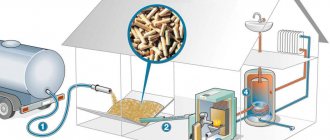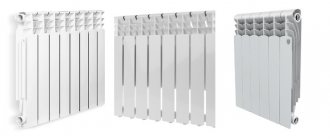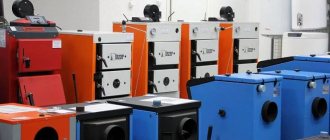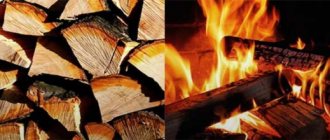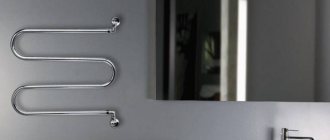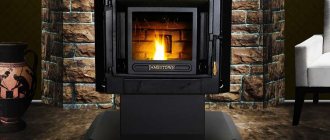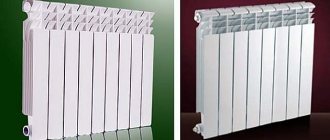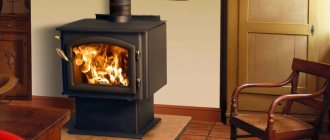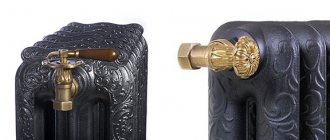- Dutch type devices
- For heating
- MBS Olymp
There are many different ways to heat a room, but in country cottages home heating stoves remain the most popular. They are rightfully considered one of the most practical and functional. For several millennia, logs were the only possible, and most importantly, renewable resource. They coped with their purpose perfectly - they brought warmth and comfort to the owners of the home. From the fire in the center of the cave, after a couple of dozen transformations, they managed to achieve their modern appearance. In this review from Feflues.ru, we will look at the design features and their advantages, and also select the best models.
When is it profitable to burn with wood?
Not all devices are capable of performing several functions at once. Fireplaces can only be considered as an additional or decorative element - they cannot cope with heating a medium-sized building.
When choosing heating for suburban real estate, it is worth considering several nuances:
- Seasonality. If you plan to come a couple of times in the summer and the same number in the winter, then running gas is not cheap, even when the pipeline runs through the yard. In this case, it is easier to use wood materials and install a wood-burning stove in the house.
- Availability of fuel.
- Design. It is important to create the correct design for the future heating device, then it will be possible to heat any area with firewood.
Types of furnace equipment
Furnace equipment refers to the structural elements that are used during the installation and operation of the stove. In cast iron stoves, they are already included in the kit from the manufacturer, but when connecting an additional water circuit to them, you will have to purchase additional elements for the stove:
- Pipes . These can be plastic or metal pipes. Preference is always given to metal ones, as they are more reliable, but plastic ones are cheaper. The disadvantage of plastic pipes is the possibility of their melting at the joints with metal. Metal ones do not have this drawback.
- Diaphragm (expansion) tank . It is necessary to maintain constant pressure in the pipes. When heated, the water begins to expand and enter this tank, so the pipes will not collapse from excess pressure. When cooling, excess water from the tank begins to gradually flow back into the pipes.
You can’t do without an expansion tank for any method of heating a house Source koffkindom.ru
- Radiators . They are usually installed directly under the windows. They increase the heat transfer of the water circuit.
- Water pump . It is required for water circulation in the circuit. Its installation helps to quickly heat the room, since the heated water quickly enters the radiators and heats the room. Without a pump, the movement of water through the pipes is carried out by gravity, but for this it is necessary to make special slopes, calculate the difference in heights and the difference in temperatures of the first circuit with heated water and the second circuit with cooled water - it is also called return.
- Heat exchanger . It is installed in the furnace firebox, above it, or on the chimney. All options have their advantages and disadvantages. This is a kind of boiler in which water will subsequently be heated. For chimneys, the heating tank is made in the form of a coil; for a firebox, it can have an arbitrary shape, but it is very important that it has a sufficient area of contact with the stove flame.
Scheme of operation of stove heating with a pipeline Source m.yukle.mobi
Wise choice: what to pay attention to
Over the entire existence of mankind, a huge variety of heated structures have been invented. The differences were in appearance, assembly and function.
Nowadays, furnaces are classified according to different criteria depending on:
- Purpose: heating and heating-cooking models.
- Brenda. On the Russian market there are products of domestic production, as well as from Belgium, Poland, France, Canada, the Czech Republic, Serbia and Sweden.
- Case material. They are made from cast iron, ceramics, tiles, steel, stone, brick and other fire-resistant substances.
- Size. There are small, compact, lightweight, large-sized ones.
- Locations. It is located near the wall, in the corner, as an island.
- Parameters For example, the outlet pipe of the furnace comes in different diameters; it can be located in the upper part or behind.
- Firebox material.
- Productivity. The models have different thermal power; they are designed for room volumes from 50 to 300 cubic meters.
- Additional characteristics: door made of fireproof glass or steel.
What you should pay attention to
When choosing a heating device for your home, you should take into account the features of modern stoves:
- Firebox and wall material. It is better to purchase a stove made of heat-resistant metals or cast iron. Black boiler steel will also do the job well. The walls must be strong enough - at least 8 mm thick.
- The ability to operate the furnace under conditions of long-term combustion, which is achieved through the special structure of the combustion part. The combustion chamber of such models has the function of afterburning flue gases. With this structure, it is enough to add fuel once every 4-8 hours.
- Fast heating of the room.
- Small dimensions (for metal and cast iron stoves).
- It is mandatory to equip the place where the stove will be installed with fire-fighting materials.
Do-it-yourself iron country stove - step-by-step instructions
The simplest version of an iron stove is the well-known potbelly stove , which is absolutely undemanding in terms of fuel. Improved factory versions can be made of steel and cast iron, have decorative trim and a glass door, and be installed on bent legs. But for self-production, something else is important: simplicity, reliability, straight lines of the design.
Table 2. Characteristics of popular Butakov iron stoves.
| Model | High school student | Student | Engineer | Assistant professor | Professor |
| Room volume, cubic meters m | 100 | 150 | 250 | 500 | 1000 |
| power, kWt | 6 | 9 | 15 | 25 | 40 |
| Dimensions, cm | 37*66*78 | 37*66*78 | 44*76*89 | 57*97*115 | 67*111*125 |
| Weight, kg | 55 | 77 | 113 | 182 | 235 |
| Chimney diameter, mm | 120 | 120 | 120 | 150 | 200 |
| Min. height of the chimney from the grate, m | 5 | 5 | 5 | 6 | 8 |
A good option for self-production is the Loginov . It is distinguished from a conventional stove by the presence of two shelves at the top of the firebox, which more than double the path of burnt gases, increase efficiency and heat output.
Step 1. Cutting the material . Having drawn a diagram of the potbelly stove on paper, estimate all the dimensions. The best option: 80 * 45 * 45 cm. In addition to the box itself, inside you will need to place a grate and two reflective shelves. It is better to make all elements removable. The cutting can be done with a grinder, and the chamfer can be removed from the edges with a grinding wheel.
Drawing of Loginov's potbelly stove
Step 2. First, the side and rear walls are welded together , pointwise. They are tapped with a hammer for leveling, placed on the bottom, which is also welded, now along the entire seam to make the parallelepiped rigid. The grate can be made from a sheet of steel with a thickness of at least 4 mm , in which longitudinal holes can be cut. 4 pieces of reinforcement are welded along the inner walls, on which the grate will rest. The upper reflectors are installed in the same way, but always with an offset - the lower one is closer to the front wall, the upper one is closer to the rear.
Prices for popular models of welding machines
Welders
The side and back walls are grabbed first
Step 3. To hang the door, the hinges are first welded onto it, and then onto the front wall. The firebox door is larger than the vent. The easiest way to make latches is from bolt-mounted strips that will fit behind hooks welded to the front wall. The front wall is welded last, after the top sheet with a hole for the chimney.
Door version
Step 4. The box is ready . For convenience, legs from pieces of metal corner are welded from below. A section of pipe is welded to the chimney opening, onto which the rest of the pipe is then placed. In this section you need to make a gate, that is, a damper, by adjusting which you can turn an ordinary potbelly stove into a long-burning stove. The principle is simple: if you shut off the damper and close the doors of the firebox and the blower, the air will flow very slowly, and the wood will smolder rather than burn.
By laying a lot of wood, you can stretch one firebox for 8 – 10 hours – just enough to sleep comfortably. Two coaxial holes are drilled in the pipe, a pin is inserted into the bottom, and the outer end is bent 90 degrees . Inside the pipe section, an iron round slightly smaller than the diameter of the pipe is welded to the stud. By turning the pin around its axis, you can adjust the width of the open chimney channel.
The gate allows for slow combustion
Step 5. The height of the vertical pipe is about 1.2 - 1.5 meters . Next comes an inclined part from one and a half to two meters . It is called a hog and also participates in heating the room, because hot gases heat it up greatly. It is better to take it outside through the wall, covering the exit with glass wool or mineral wool.
Well-organized chimney
Place the finished potbelly stove on a steel sheet. Sometimes a screen is hung on the sides. It performs a dual role: protects against contact with hot walls; heating itself, it serves as a plane that releases a lot of heat into the room. With these simple measures you can turn a simple iron stove into a work of engineering art.
Our separate detailed article on the topic - Mixture for laying a brick stove, where we analyzed in detail the correct proportions, as well as tips for mixing it yourself, will be very useful.
Basic requirements for wood stoves for heating a private home
If the design is chosen correctly, it meets several conditions:
When choosing a heating device, you must be guided by the following requirements:
- Saving. One of the main requirements is that fuel should be consumed in small quantities.
- Strength. The service life of the stove is directly affected by quality materials, durable parts, and intensity of use. Then the device will last from 20 to 50 years.
- Dimensions. For a small building this is a critical indicator. But even in a small detached building there is no point in installing a huge monumental boiler.
- Achieved effect. The stove maintains a comfortable temperature for as long as possible.
- Aesthetics. It is better to choose from those models that fit into the design of all rooms.
- Safety. It is important that everything is made of fireproof materials, does not overheat and does not allow open flames to pass above the hob.
conclusions
Having decided on the need to purchase a new wood-burning stove for your home, you should listen to the recommendations of experts and pay attention to the following nuances:
- the main criteria for choosing equipment are maximum power, heated volume and housing material ;
- An important role in the selection of design is played by the possibility and type of connection to the chimney - from behind or from above;
- indicators such as the method of heat transfer and the dimensions of the structure should be taken into account - it should not take up much space in the room;
- Additionally, you should study information about the volume of the combustion chamber - a volumetric firebox can accommodate a large amount of firewood.
Types of stoves for heating a house with wood
You can find many models on sale, among them there are both ancient masonry methods and modern units. We suggest considering the main ones:
- Traditional. They are built from stone or brick. They are considered safe and almost eternal. She is Dutch, Russian, Swedish. Such models heat up slowly, the room does not warm up too quickly, but the resulting heat will be retained much longer than those made of metal. Only a master can put them together; not everyone can do it. They are usually purchased by lovers of exotic or antique items.
- Fireplace. This is an open fire framed by beautiful masonry. Stands against the wall in a large room and creates a cozy atmosphere. It is not suitable as a heating device - it does not warm the room well.
- Metal and cast iron. One of the most popular options due to ease of maintenance and various cost options. The structures heat up quite well, and everything around them also warms up in a short time.
The best fireplace stoves with a water circuit
Vesuvius PK-01(270) RED
Convection stove-fireplace for heating rooms with an area of up to 60 square meters. m . The firebox and ash door are made of cast iron.
The handle presses the door tightly against the body, preventing smoke from entering the rooms and suction of excess air.
Operates in two modes . The first is intense combustion with heating of the room in 60 minutes.
The second is long-term with maintaining heat for 3-4 hours on one stack of firewood. The presence of a water circuit allows you to connect the stove to a forced circulation water system.
Characteristics:
- heating volume - 150 m3;
- power - 9 kW;
- chimney diameter - 11.5 cm, connection type - top;
- functions - water circuit, flame adjustment, clean glass, 5 hours of combustion;
- complete with ash pan and hob;
- door material - glass, finishing - fireclay;
- dimensions - 43.4x81.3x50 cm;
- the weight of the fireplace stove is 107 kg.
Advantages:
- fast and uniform heating of the area;
- Can be used as a regular stove;
- connecting an electric fan for turbojet heating;
- durability;
- operation in tandem with a water heating system;
- easy installation.
Flaws:
- No.
Vesuvius PK-01(270) BEIGE
This stove warms up rooms with an area of up to 60 square meters. m . The combustion chamber is equipped with a sealing cord from the inside to improve sealing.
The blower door allows you to regulate the flame, creating a long or intense burning mode . The side decorative tiles can be removed and replaced to suit the overall style of the interior.
The water circuit allows you to connect the unit to a water heating system, reduce fuel costs, and increase the time for the initial heating of the room.
Characteristics:
- heating volume - 150 m3;
- power - 9 kW;
- chimney diameter - 11.5 cm, connection type - top;
- functions - flame adjustment, clean glass, burning time - up to 5 hours;
- complete with ash pan and hob;
- door material - fireclay, lining - fireclay;
- dimensions - 43.4x81.3x50 cm;
- the weight of the fireplace stove is 107 kg.
Advantages:
- quick cooking in country conditions;
- accelerated heating process of rooms and adjacent rooms;
- excellent functionality;
- long burning system;
- fuel economy;
- instant start at any time of the year;
- unique design.
Flaws:
- No.
ABX Bavaria K
Popular model from the Czech manufacturer . This is a budget sample from the line of ceramic installations, with seven shade options.
The professional York firebox operates smoothly, quickly warming up the room.
It is covered with vermiculite, which is the most fire-resistant material.
The lining protects the housing from sudden temperature changes, affects cleaner combustion of fuel, and increases efficiency.
The case acts as an excellent thermal energy accumulator, giving off heat for 6 hours.
Characteristics:
- heating volume - 200 m3;
- power - 7 kW;
- chimney diameter - 14 cm, connection type - rear and top;
- functions - long burning, clean glass;
- equipped with a niche for storing firewood;
- firebox material - cast iron, cladding - ceramics, doors - glass;
- dimensions - 74.5x74.6x45 cm;
- the weight of the fireplace stove is 270 kg.
Advantages:
- wide palette of body colors;
- the convection grill speeds up the heating process during the first installation;
- the niche allows you to keep the firewood dry;
- water circuit equipment;
- possibility of connection to a water heating system;
- durability, strength.
Flaws:
- No.
META Angara Aqua
An interesting and high-performance model with a water circuit . Made of fireproof steel and ceramics. The side parts are made of glass.
You can watch the play of fire through the wide panoramic glass.
Easily connects to any heating system, which increases functionality and speed of heating of each room.
Characteristics:
- heating volume - 150 m3;
- power - 9 kW;
- chimney diameter - 11.5 cm, connection type - top and rear;
- functions - burning time - 5 hours, flame adjustment, clean glass;
- complete with ash pan and hob;
- dimensions - 43.4x81.3x50 cm;
- the weight of the fireplace stove is 107 kg.
Advantages:
- adjustment of the clean glass system;
- long-term heat support;
- secondary afterburning;
- water circuit;
- decorative ceramic inserts;
- there is a heat exchanger that is easy to clean;
- A stainless steel afterburner increases the quality of combustion;
- fast cooking.
Flaws:
- No.
EdilKamin Aqua
In addition to its wide functionality, this model is capable of creating a full-fledged heating system in a dacha . The interior of the firebox is complemented by a thermal circuit made of boiler steel.
The coil lowers the temperature for increased safety, and the built-in sensor prevents the system from overheating.
The combustion chamber is covered with fireclay, which is resistant to sudden temperature changes and the destructive properties of combustion residual products.
A person receives a full-fledged boiler for efficient heating of a dacha at any time of the year.
Characteristics:
- heating volume - 325 m3;
- power - 5 kW, circuit - 7 kW;
- chimney diameter - 15 cm, connection type - top;
- Efficiency - 72%;
- complete with ash pan;
- body material - cast iron, doors - glass, cladding - ceramics;
- dimensions - 52x95x52 cm;
- the weight of the fireplace stove is 154 kg.
Advantages:
- ideal for cooking;
- easy connection to the chimney and heating system;
- quick heating of the room;
- burning duration;
- durability, highest quality of all structural elements;
- attractive appearance.
Flaws:
- No.
Brick heating devices
They allow you to combine all possible functions that a person needs in the house. Suitable even for use in the countryside. With its help you can perform basic tasks:
- warm up the premises;
- maintain the microclimate;
- dry clothes;
- make preparations for the winter;
- heat the water;
- cook food.
Dutch type devices
Used exclusively for heating apartments. It looks compact and will fit even in a small extension. If placed between different rooms, it will heat both and at the same time serve as a partition.
"Swede"
More common among stoves for heating a private home and cooking with wood. You can actually cook dinner on it and dry your laundry. Sometimes there is an oven.
Kitchen stove
The most economical in terms of fuel consumption. Designed for heating rooms and cooking. If you need to place it in a small kitchen, then you should place the device in the middle. This way the whole home will be warmed up.
Rules for safe operation
To ensure that the operation of heating devices does not cause any trouble, you should follow a few simple rules for their use:
- The stoves must be installed on a non-flammable, heat-resistant base made of concrete or asbestos-cement sheets with a sheet of iron laid on them.
- The elements of the heating device must be in good working order: the legs must firmly hold the stove, the door lock is working, and the grates are intact.
- Do not load the firebox more than 2/3 of its volume, or install it less than 80 cm from walls or flammable partitions.
- Particular attention should be paid to chimneys; all joints should be sealed with special tape.
- Do not leave flammable objects, plastic products, network carriers, or children's toys near the stoves.
- There is no need to leave heavy objects, such as a bucket of water, on the stove for a long time.
- Do not open the door when fully loaded with fuel.
In addition, experts advise using only well-dried firewood. By following these simple rules, you will protect yourself and your home from possible troubles.
Wood-burning stoves for heating have a variety of designs and designs, from which it is not easy to choose the right one, suitable not only for the interior of the room
Sources
- https://expert-dacha.pro/otoplenie/pechi/pechi-kaminy/dlya-dachi-dlitelnogo-goreniya.html
- https://TehnoExpert.top/drovyanaya-pech-dlya-doma-reyting
- https://almaz2000.ru/for-clients/articles/reyting-pechey-dlitel-nogo-goreniya/
- https://HouseChief.ru/kak-vybrat-pech-dlya-dachi.html
- https://sovet-ingenera.com/otoplenie/pechi/otopitelnye-pechi-na-drovax-dlya-dachi.html
[collapse]
Cast iron appliances
These products are no less popular than brick ones. In some properties they are superior to masonry.
Among the advantages:
- reasonable price;
- attractive appearance;
- ease and speed of installation;
- compactness;
- fast heating and slow cooling;
- high service life;
- can be installed even without a massive foundation.
This variety is suitable in cases where a traditional heater does not fit or the buyer does not like. In addition, in a well-insulated home, the efficiency tends to be 80%.
For heating
The task of the device is to create and retain heat in the rooms. Often a durable fireproof window with transparent glass is created. An improvised fireplace can be used throughout the cold season.
Heating and cooking appliances
They have 1-2 burners, and sometimes also an oven for baking. Using the product it is possible to cook and heat water, dry fruits, clothes and other items. They are often installed in areas where there is no gas heating.
Cast iron fireplace stoves
Be sure to be equipped with a special window for observing the combustion. You can open it and look at the live fire or close it so that the model performs a heating function. The main difference is the enlarged combustion chamber.
Fire safety requirements
The rules require maintaining certain distances to the stove from the surfaces of the house:
- if a steel stove operating on solid fuel is installed on a floor covering made of flammable materials, the minimum distance to the bottom of the heater is 140 mm;
- a separate foundation is made for an iron or brick stove or a slab of durable, non-combustible materials is laid. Its size must exceed the dimensions of the heater by 500 mm on each side;
- the minimum distance from the floor slab made of combustible materials to the top of the device is 1000 mm;
- the size of the indentation to a wooden wall from a steel stove that is not protected by a layer of thermal insulation or not lined with brick is 1000 mm;
- with installed industrial panels made of a layer of thermal insulation and a mirror metal coating, the size is reduced to 380 mm;
- the stove equipped with a protective screen must be 130 mm away from the wall lined with brick or ceramic tiles.
Design and rules for placing a home heating stove
The design features can be anything, but the main work in them follows one principle - to burn wood to get heat.
The equipment comes standard:
- firebox - the place where the fuel will burn;
- ash pan - a chamber for collecting ash;
- grate - a small grate on which firewood will lie during combustion, ash also escapes through it;
- chimney - needed to remove accumulated gas;
- smoke damper - with its help, the pipeline is blocked and retains heat inside.
When choosing a space to install any model, several factors need to be taken into account:
- It is advisable not to place the stove near an external wall - the street will be heated;
- do not place it opposite the exit or doors to another room - a draft will interfere with normal operation;
- the best place for placement is in the wall between rooms;
- installation must take into account all fire safety rules and SNiP.
Distinctive features
The operation of any of the systems based on long-term combustion of fuel occurs by ensuring the combustion of pyrolysis gases .
They are released when organic fuel burns slowly. Air ducts in such structures have their own characteristics, due to which the wood smolders and releases hydrocarbons in the form of gas.
The operating principle of fireplace stoves is as follows:
- Pyrolysis gases, which are formed during the slow oxidation of organic-based fuel, come into contact with air and then enter the combustion chamber. As a result of the process, a significant amount of thermal energy is released.
- The resulting heat can be used to transfer temperature to a coolant or a boiler with an indirect type of heating.
IMPORTANT! An important advantage of a fireplace stove is the minimal level of soot formation when burning pyrolysis compounds.
But it is worth considering that when installing such a device, you need to properly install the chimney . It will allow for high-quality removal of waste gases, ensuring the safety of residents and the efficiency of the furnace.
Advantages and disadvantages
There are several advantages of installing this heating option:
- ease of installation and use;
- speed - the home completely warms up in half an hour to an hour;
- compactness - takes up little space;
- efficiency - with high efficiency, firewood will be consumed in small quantities;
- multifunctionality - use not only as a heating element, but also as a space for cooking;
- aesthetics - such an interior detail can attract attention with its unusual appearance;
- safety - if everything is installed according to the rules, then the likelihood of a fire from the structure is at a minimum level.
Of the obvious shortcomings, only the following can be noted: when heating a house with a wood and coal stove, oxygen is burned, the air in the room must be ventilated.
Among the inconveniences we can note:
- the need for good fuel (wood suitable for this type of stove, or coal);
- constant maintenance - clean the inside, remove ash, check the dryness of the logs before use.
When choosing a heating stove, be guided by the following points:
- you need to look for fuel and dry it;
- danger of open fire - if it is a fireplace or the firebox is often opened, then a fire becomes inevitable;
- a device assembled not according to instructions or without the participation of a specialist will take much more consumables and heat poorly;
- the need for constant maintenance.
Do-it-yourself brick oven for a summer residence
If you have come to the conclusion that you will build the stove yourself, then you should decide on the type of construction. The Swede is considered more functional , as it contains an oven and hob , as well as niches and compartments for simmering food or drying clothes and shoes. The Dutch oven is a purely column-type heating stove; the only openings in its walls are the firebox, ash pan and cleaning doors. But this also determines its advantages: simplicity of design , reliability and durability . In addition, summer residents do not often cook food on the stove. Most people have either bottled gas or an electric stove and oven for this.
The initial stage of laying the furnace
According to stove makers, the construction of the “Swedish stove” was rather driven by the desire to get many functions in one device. In addition, the cast iron oven located next to the firebox quickly heats up and begins to heat the room. The hob does the same. But at the same time, a low combustion height leads to incomplete combustion of substances in an open flame, as a result - more soot and soot, the need for frequent maintenance, and in the absence of it - clogging and a decrease in efficiency. Therefore, for heating purposes, it is better to build a “Dutch stove” - although it will not allow you to cook food on it, it will cause fewer problems during operation.
The classic “Dutch” does not have an ash pan, grate or ash pan. Firewood placed in the firebox, thanks to this, burns longer, but produces more soot, and less heat is produced. Therefore, stove makers recommend equipping a classic ash pan with a grate and a door for the ash pan, which will not only allow for better heating with wood, but sometimes use coal or peat .
Typical "Dutch"
Foundation
Despite its light weight, it is reckless to install a “Dutch” without a foundation, since the logs can sag over time, and the structure will be damaged even to the point of cracks. The best option is to make a monolithic concrete base , reinforced with corrugated reinforcement. It can also be made from solid brick, but there is a risk of cracking. If the house has never had a stove, you first need to make a hole in the floor. The finished floor is removed, then the logs are sawed so that their ends rest on the posts.
In the resulting hole, you need to remove the top layer of soil and make a backfill of sand and crushed stone. Formwork is built on top and reinforcement is tied in. Considering that the structure is small in area, a rod of 10 mm . the pitch between the rods is 40 cm . You need to make at least two horizontal layers. Fill everything with concrete and leave to dry. After drying, even such a small foundation is better to stand for a couple of weeks, or even a month for settlement. The foundation for a standard stove is usually made into a square with a side of 120 cm .
The best foundation is made of reinforced concrete
Step-by-step laying of the furnace
The mortar for stove masonry experiences constant temperature fluctuations. When the stove is heated, it heats up very much, and during the winter period of inactivity it cools down to negative values. Cement mortar cannot withstand such changes and quickly cracks and crumbles. Clay is used to lay the stove. You can buy it, but the easiest way is to get it yourself by making a hole to a depth of 1 - 1.5 m .
When removing the clay to the surface, you need to check its fat content. The softer and more flexible it is, the fattier it is considered. The optimal ratio for a solution of normal fat content is two parts sand to one part clay . You can take quarry ; it also contains clay particles. Sift everything through a sieve. Laying one hundred bricks requires about 20 liters of water .
Prices for fireproof mortar for stoves and fireplaces
Fireproof mortar for stoves and fireplaces
Mixing the solution must be approached very responsibly
Step 1. Having laid rolled waterproofing on the dried and settled foundation, we begin to lay out the stove. It is best to print yourself an ordering diagram on a color printer in advance. Make each level on a numbered sheet, or take whatman paper and present the entire diagram on it.
Step 2. The masonry is carried out in half a brick, preferably solid, fire-resistant. Lay out the levels sequentially according to the order scheme. Where required by the design, bricks must be placed on edge or beveled. A grate is placed between the ash pan and the firebox.
Step 3. It is easiest to attach the vent door, and then the firebox, to nichrome wire . It is inserted into the holes on the door frame, and then twisted into a “pigtail”. Such bundles are inserted into the masonry two bricks deep and bent. The following layers overlap the wire, and after the solution has hardened, the door is firmly seated. The main thing is to prevent the wire harness from loosening. An asbestos cord is placed under the door frame for sealing.
Door fastening
After the construction of the furnace body, it is necessary to equip a transition to the chimney steel pipe. Before this transition, a damper is installed to adjust the draft. Cleaning doors are installed in the chimney ducts, usually on both sides.
Chimney installation
It is easier to make a chimney from a pipe. You can take an ordinary thick-walled steel one - it’s cheaper , pass it through the roof and bring it half a meter above the highest point of the roof. Nowadays there are ready-made prefabricated elements on sale that are assembled using locking connections. All that is needed for it are holders welded from the profile. This prefabricated chimney is suitable both for exhaust through a wall with a knee bend, and through the roof. The first option is easier to do.
The prefabricated elements are a sandwich of two stainless steel cylinders, between which a layer of non-combustible insulation is laid. If you just have a steel pipe, you can insulate it with mineral wool - it does not burn or melt even at high temperatures.
Factory lock pipe
Finishing
The decoration for the summer resident opens up space for imagination. You can decorate the stove with tiles or refractory tiles , or you can simply whitewash it . Neat red brick with embroidered seams looks good on its own. Another option is to take a steel sheet 1 - 1.5 mm , pickle or burnish it and close the stove with it, arranging decorative rivets. Don't forget to place the pre-furnace sheet in front of the stove front. It will protect the wooden floor from fire if a coal or firebrand flies out of the ash pan or firebox. It is usually made from stainless steel.

